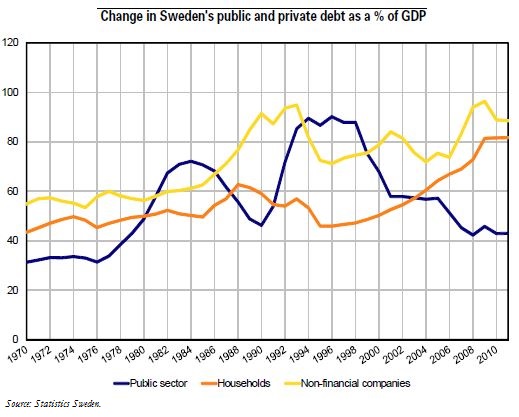Trésor-Economics No. 105 - Lessons for today from Sweden's crisis in the 1990s
Sweden experienced a serious crisis in the early-1990s, with banks collapsing, a sharp drop in GDP, soaring public debt, loss of the country's triple A rating, and a jump in unemployment not seen since the 1930s.
This crisis came after a period during which wages and prices had spiralled out of control throughout the 1970s and 1980s, rectified by frequent devaluations. A mismanaged deregulation of credit in the 1980s led to runaway lending and overheating. What began as a property and banking crisis, triggered by an interest-rate hike at the start of the 1990s, then transformed into an economic and monetary crisis.
The Swedish authorities acted on two fronts to deal with the crisis. In addition to tackling the banking crisis immediately and implementing a policy mix designed to restore the economy's key ratios and indicators, Sweden embarked on a vast array of structural reforms covering governance of the public finances, freeing-up the economy, reforming the welfare state (pensions especially), as well as steering the country towards a more export-oriented growth model.
After letting its deficit slide during the height of the crisis, Sweden rapidly set in train a process of fiscal consolidation by the end of 1992, then stepped up its deficit-cutting drive once recovery had set in. The decision to reform a broad swathe of sectors as part of a single process helped sustain the positive initial effects of the currency depreciation and the boom in world trade. Finally, the methods used to design and adopt these reforms ensured their broad acceptance and so established them on a permanent footing.
Twenty years after this crisis, Sweden's economy has performed outstandingly. While it would be hard to take it as a model, because of the importance of the factors at work that cannot be reproduced elsewhere, such as the initial depreciation of the krona (down 23% against the ECU) or the concurrent boom in global trade, Sweden's experience can nevertheless serve as an inspiration, particularly as regards the method used.
